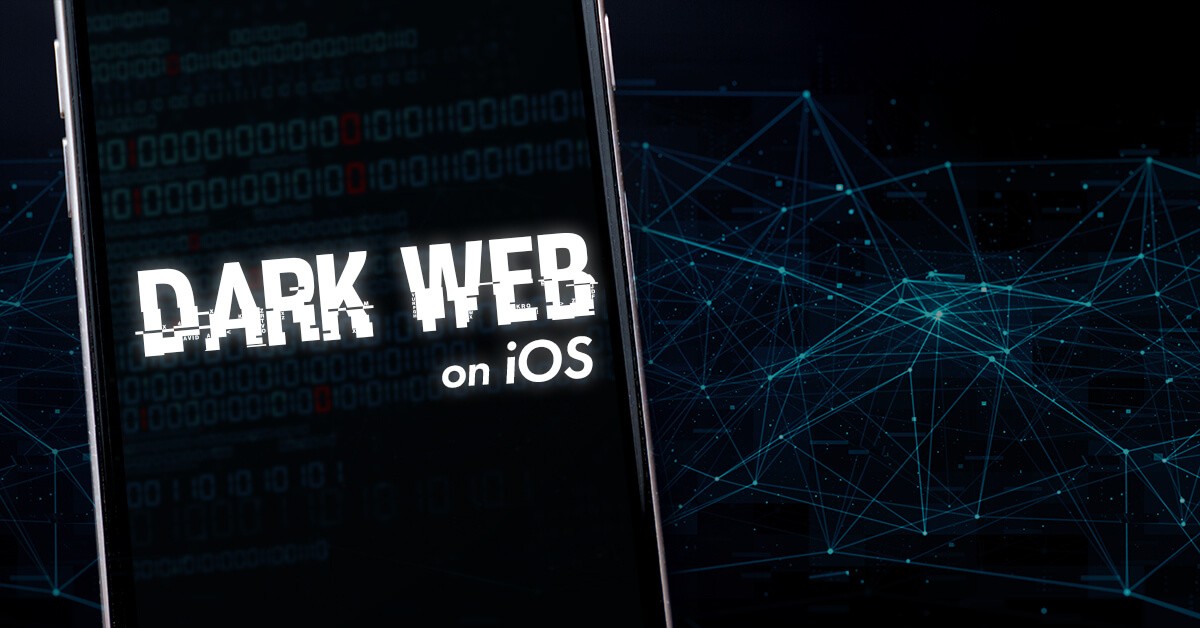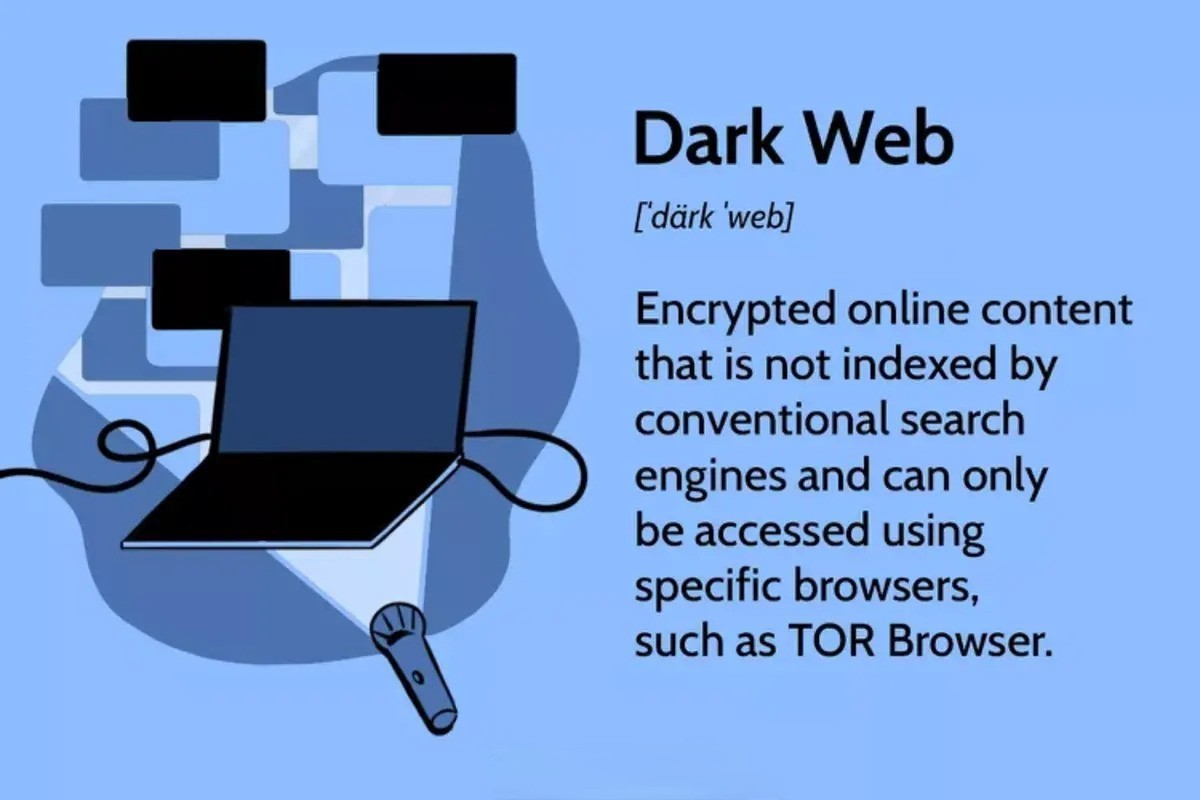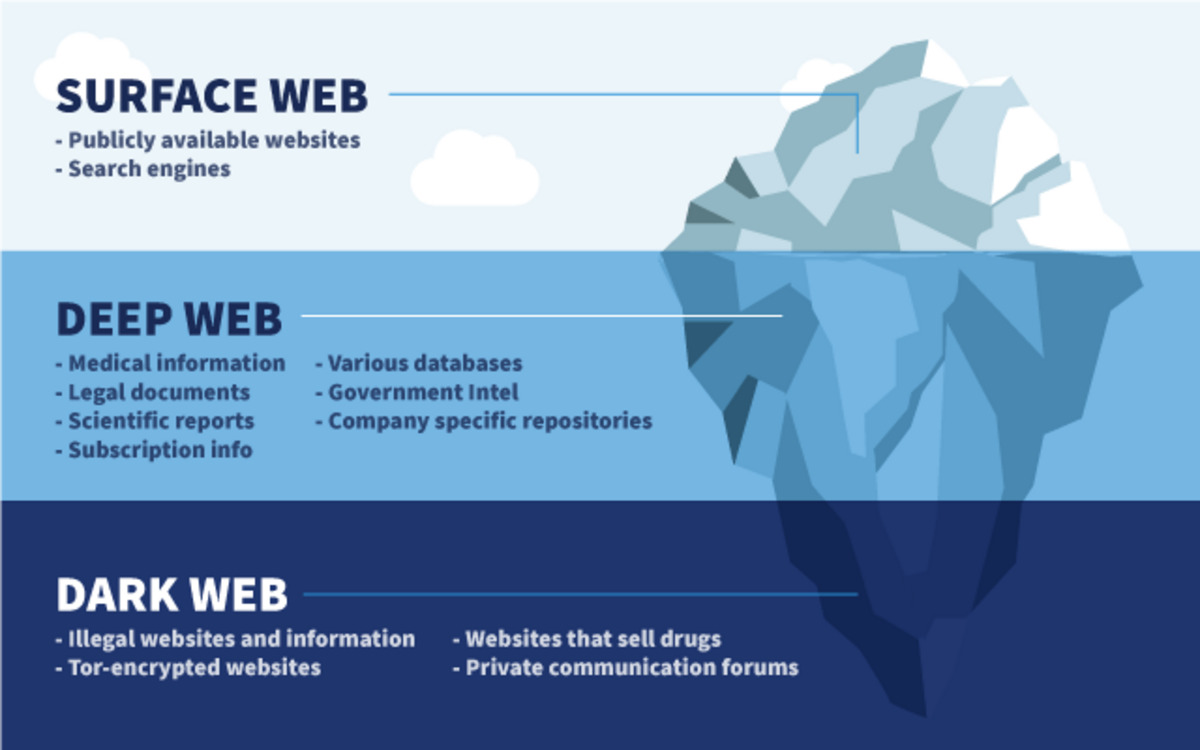Introduction
In today’s digital age, the internet has become an integral part of our daily lives. We use it for communication, entertainment, shopping, and accessing information. However, along with its numerous benefits, there is a darker side to the online world – the infamous Dark Web.
The Dark Web is a part of the internet that is not indexed by search engines and requires special software to access. It is a hidden realm where illegal activities, such as drug trafficking, hacking, and stolen data trading, flourish. While the Dark Web may seem like something out of a crime thriller, the reality is that it poses real risks to our online security and personal information.
In this article, we will explore the dangers of the Dark Web and provide you with steps to better protect yourself in this vast and treacherous digital space. By following these tips and being proactive in safeguarding your online presence, you can significantly reduce the chances of becoming a victim of cybercrime.
Understanding the Dark Web
The Dark Web is a hidden part of the internet that cannot be accessed through traditional search engines like Google, Bing, or Yahoo. It exists on encrypted networks and requires special software, such as Tor (The Onion Router), to access. The Dark Web provides users with anonymity and privacy, making it an attractive platform for illicit activities.
Unlike the surface web, which constitutes the websites and content indexed by search engines, the Dark Web operates on a different protocol. It uses a network of servers that encrypt and redirect internet traffic multiple times, making it extremely difficult to track users’ identities or the location of the servers hosting the websites. This anonymity attracts criminals, allowing them to engage in illegal activities behind a veil of secrecy.
On the Dark Web, various marketplaces exist where users can buy and sell illicit commodities, such as drugs, weapons, stolen credit card information, and even hacking tools. These marketplaces function similarly to e-commerce websites, complete with reviews and ratings for sellers. The transactions are often conducted using cryptocurrency, such as Bitcoin, which further helps maintain anonymity.
It is essential to note that not everything on the Dark Web is illegal. While the majority of its activities are illicit, there are also legitimate platforms, such as whistleblowing websites or forums advocating for privacy and freedom of speech. However, accessing the Dark Web comes with inherent risks due to its secretive and unregulated nature.
Law enforcement agencies and cybersecurity experts continually monitor the Dark Web to identify criminal activities and shut down illicit websites. However, this cat-and-mouse game makes it challenging to completely eliminate cybercrime from the Dark Web.
Now that we have a basic understanding of the Dark Web and its workings, let us delve into the potential dangers it presents and how you can protect yourself from them.
The Dangers of the Dark Web
The Dark Web poses significant dangers to individuals and businesses alike. Here are some of the risks associated with venturing into the depths of the Dark Web:
1. Identity Theft: On the Dark Web, cybercriminals can easily access and trade personal information, such as social security numbers, credit card details, and login credentials. This information can be used for identity theft, leading to financial loss and reputational damage.
2. Malware and Cyberattacks: Dark Web marketplaces offer hacking tools and malicious software that can be used to infiltrate computers, steal sensitive data, or launch sophisticated cyberattacks. These attacks can result in significant financial loss and compromise the security of individuals, businesses, and even governments.
3. Illegal Trade: The Dark Web is a hotbed for illegal trade, including drugs, weapons, counterfeit goods, and stolen data. Engaging in such activities can lead to legal consequences, as law enforcement agencies continue to monitor and crack down on these illicit operations.
4. Online Scams and Fraud: Scammers flourish on the Dark Web, offering fake services and products to unsuspecting users. From fraudulent marketplaces to phishing schemes, the risks of falling victim to scams are heightened in this shady digital realm.
5. Exploitation of Children: Unfortunately, the Dark Web harbors disturbing content involving the exploitation of children, including child pornography and human trafficking. Engaging with such content is not only a legal offense but also perpetuates the harm inflicted upon vulnerable individuals.
6. Exposure to Extremist Content: The Dark Web is a breeding ground for extremist ideologies and radical propaganda. Accessing and participating in these platforms can inadvertently expose individuals to dangerous ideologies and subject them to potential legal scrutiny.
Understanding the dangers of the Dark Web is crucial to protect yourself and your digital assets. In the next section, we will explore various steps you can take to safeguard your online presence and minimize the risks associated with the Dark Web.
Steps to Protect Yourself
While the Dark Web may seem like a daunting and risky place, there are proactive steps you can take to protect yourself from its dangers. By implementing these measures, you can significantly reduce the likelihood of falling victim to cybercrime:
- Safeguard Your Personal Information: Be cautious about sharing personal information online and limit the amount of sensitive data you disclose. Avoid posting personal details on social media platforms or websites that may be compromised.
- Keep Your Passwords Strong and Secure: Use unique, complex passwords for all your online accounts and avoid reusing passwords across different platforms. Consider using a password manager to generate and store your passwords securely.
- Enable Two-Factor Authentication: Add an extra layer of security by enabling two-factor authentication (2FA) wherever possible. This involves providing an additional verification step, such as a code sent to your phone, in addition to your password.
- Regularly Update Your Software and Devices: Keep your operating system, applications, and antivirus software up to date to protect against known vulnerabilities. Enable automatic updates whenever possible or regularly check for updates manually.
- Be Wary of Phishing Attempts: Beware of emails, messages, or websites that try to trick you into revealing personal information or clicking on malicious links. Be skeptical of unsolicited communication and verify the legitimacy of the source before taking any action.
- Use Encryption to Protect Your Communication: Utilize encrypted communication channels, such as HTTPS websites, encrypted messaging apps, and virtual private networks (VPNs), to secure your online interactions and protect your information from prying eyes.
- Avoid Suspicious Websites and Downloads: Be cautious when visiting websites on the Dark Web or downloading files from unknown sources. Stick to reputable websites and only download files from trusted sources to minimize the risk of malware infections.
- Utilize Virtual Private Networks (VPNs): Consider using a VPN service to encrypt your internet connection and mask your IP address. VPNs can provide an additional layer of anonymity and security when accessing the internet.
- Stay Vigilant with Your Financial Details: Regularly monitor your financial accounts for any unauthorized transactions and review your credit reports for signs of identity theft. Report any suspicious activity to your bank or financial institution immediately.
- Monitor Your Online Presence: Regularly search for your name or personal information on search engines to see if any unauthorized data is circulating. Set up alerts for your name or email address to receive notifications of potential data breaches.
By following these steps, you can significantly enhance your online security and reduce the risks associated with the Dark Web. Remember, prevention is key, so always be proactive and stay informed about the evolving threats in the digital realm.
Safeguard Your Personal Information
In an increasingly digital world, protecting your personal information is paramount. Here are some essential steps to safeguard your sensitive data:
Be cautious about sharing personal information: Be mindful of the information you share online, especially on social media platforms. Avoid disclosing sensitive details like your full name, address, phone number, or birthdate unless necessary.
Limit data disclosure: When creating accounts or filling out forms online, only provide the minimum required information. Avoid sharing unnecessary personal details that could potentially be exploited by cybercriminals.
Exercise caution with emails and messages: Be cautious when responding to emails or messages asking for personal information. Legitimate organizations will rarely request sensitive data via email or text, so verify the source before providing any information.
Use strong and unique passwords: Create strong and unique passwords for all your online accounts. A strong password typically consists of a mix of upper and lower-case letters, numbers, and symbols. Avoid using easily guessable passwords or reusing them across multiple platforms.
Consider password managers: Password managers can generate and store strong, unique passwords for your various accounts. These tools encrypt your passwords and store them securely, requiring you to remember only one master password.
Enable two-factor authentication (2FA): Enable 2FA whenever possible to add an extra layer of security to your accounts. This typically involves providing a secondary verification, such as a code sent to your phone, in addition to your password.
Regularly review privacy settings: Review the privacy settings of your social media accounts and other online platforms. Restrict the visibility of personal information to trusted individuals and avoid making sensitive details publicly accessible.
Exercise caution on public Wi-Fi networks: When connected to public Wi-Fi networks, be cautious about the information you transmit. Avoid accessing or logging into sensitive accounts on public networks, as they can be prone to eavesdropping and interception.
Secure your devices: Protect your devices with strong passwords or biometric authentication. Regularly update your operating system and applications to patch any security vulnerabilities. Consider using device encryption features to safeguard your data in case of theft or loss.
Stay informed about data breaches: Keep track of data breaches and determine if your personal information may have been compromised. Use trusted websites or services that notify you of data breaches and provide guidance on steps to take in such situations.
By implementing these safeguards, you can minimize the risk of your personal information falling into the wrong hands and reduce the probability of identity theft or other online attacks.
Keep Your Passwords Strong and Secure
Passwords are the first line of defense when it comes to protecting your digital accounts. Follow these guidelines to ensure your passwords are strong and secure:
Create strong passwords: Use a combination of upper and lower-case letters, numbers, and special characters to create robust passwords. Avoid using common or easily guessable phrases, such as birthdays or pet names.
Make passwords unique: Use a different password for each of your online accounts. This way, if one account gets compromised, the rest of your accounts remain secure.
Consider using passphrase: Instead of a single word, consider using a passphrase that is easy for you to remember but difficult for others to guess. For example, “Ilov3ToEatIceCr3am!” is a strong passphrase.
Use longer passwords: The longer the password, the harder it is for hackers to crack. Aim for a minimum of 12 characters, but consider using even longer passwords if the platform allows.
Avoid personal information in passwords: Do not include personal information like your name, birthdate, or address in your passwords. This information can be easily guessed or obtained by cybercriminals.
Do not reuse passwords: Reusing passwords across multiple accounts puts you at risk if one account gets compromised. Use a password manager to securely store and manage all your unique passwords.
Change passwords regularly: Regularly update your passwords to stay ahead of potential security risks. Aim to change your passwords at least every three to six months, or immediately if there is a possibility of a data breach.
Secure your password recovery options: Ensure that the password recovery options, such as email addresses or security questions, are secure as well. Use strong, unique passwords for your recovery email accounts, and avoid common security questions with easy-to-find answers.
Never share your passwords: Avoid sharing your passwords with anyone, even with close friends or family members. Legitimate organizations will never ask for your password, so be cautious of phishing attempts or impersonation scams.
Consider using a password manager: Using a password manager can simplify the process of creating and managing strong, unique passwords. Password managers securely store your passwords and autofill them when needed, making it easier to maintain good password hygiene.
By following these practices, you can significantly enhance the security of your online accounts and protect yourself from unauthorized access and potential data breaches.
Enable Two-Factor Authentication
Two-Factor Authentication (2FA) provides an additional layer of security to your online accounts by requiring a secondary verification step, in addition to your password. Enable 2FA wherever possible to enhance the security of your accounts:
How does Two-Factor Authentication work?
When you enable 2FA, you will typically need to provide a verification code or approve a login request on another device or app, such as a mobile device or authentication app, after entering your password. This extra step ensures that even if your password is compromised, unauthorized users won’t be able to access your account without the secondary verification.
Benefits of Two-Factor Authentication:
Enhanced Security: 2FA significantly enhances the security of your accounts by requiring an additional verification step. Even if someone manages to obtain your password, they would also need access to your secondary verification method.
Protection against Password Theft: Passwords can be stolen through various means, such as data breaches or phishing attacks. With 2FA enabled, even if your password is compromised, unauthorized access to your account is still blocked.
Prevention of Unauthorized Account Access: 2FA adds an extra step to the login process, making it difficult for unauthorized individuals to gain access to your accounts, even if they have your password.
How to Enable Two-Factor Authentication:
Most popular online platforms, including social media sites, email services, and financial institutions, offer the option to enable 2FA. Here’s how to enable it:
- Go to the security settings or account settings of the platform you want to enable 2FA for.
- Look for the 2FA or Two-Factor Authentication option.
- Follow the instructions provided by the platform to enable 2FA.
- Choose a secondary verification method, such as receiving a verification code via SMS, using an authenticator app, or using biometric verification.
- Save any backup codes provided by the platform in case you lose access to your secondary verification method.
Important Considerations:
Backup Codes: It is recommended to save the backup codes provided by the platform when enabling 2FA. These codes can be used to access your account if you lose access to your primary verification method.
Mobile Devices: Many platforms offer the option to use an authenticator app for 2FA, which is more secure than SMS verification. Consider using an authenticator app on your mobile device for added convenience and security.
Security of Secondary Verification Method: Ensure the security of the secondary verification method you choose for 2FA. Keep your mobile device or authentication app protected with a passcode or biometric authentication.
By enabling Two-Factor Authentication on your online accounts, you significantly enhance their security and reduce the risk of unauthorized access, providing you with peace of mind in an increasingly digital world.
Regularly Update Your Software and Devices
Regularly updating your software and devices is essential for maintaining optimal security and protecting yourself from potential vulnerabilities. Here’s why it’s crucial, and how you can stay up to date with the latest patches and updates:
Why is software and device updating important?
Software and device updates often include security patches that address vulnerabilities found in previous versions. Cybercriminals are constantly searching for these vulnerabilities to exploit, which is why keeping your software and devices up to date is crucial.
By updating regularly, you minimize the risk of falling victim to security breaches, as the latest updates fix known issues and add extra layers of protection against emerging threats.
How to stay up to date:
Enable automatic updates: Most operating systems, web browsers, and applications offer the option to enable automatic updates. By selecting this option, your software and devices will update automatically, giving you peace of mind that you have the latest security patches.
Regularly check for updates manually: If automatic updates are not available or preferred, make it a habit to manually check for updates on a regular basis. Visit the settings or preferences section of your operating system, applications, and browser to look for available updates.
Install updates promptly: When updates become available, install them as soon as possible. Delaying updates increases the window of opportunity for cybercriminals to exploit vulnerabilities in outdated software and devices.
Update all software and devices: Remember that it’s not only your operating system that needs to be updated. Applications, plugins, antivirus software, and even firmware in devices like routers or IoT devices should be updated regularly to ensure comprehensive security.
Enable automatic app updates: If using mobile devices, enable automatic updates for apps from your device’s app store. This ensures you have the latest version with bug fixes and security enhancements.
Regularly review your device’s settings: Keep track of any additional settings related to updates and security. For example, consider enabling options such as “Ask to update” or “Notify me of updates” to stay informed about available updates.
Create backups before major updates: Before performing major updates, such as those involving operating system upgrades, it’s a good practice to create backups of your important data. This ensures you can recover your files in case of any unforeseen issues during the update process.
Set reminders or use tools: If you tend to forget about updates, set reminders on your calendar or use tools that notify you when new updates are available. This way, you’ll stay on top of the latest security patches.
By regularly updating your software and devices, you reduce the risk of falling victim to cyberattacks and ensure your digital presence is protected against the ever-evolving threats in the online world.
Be Wary of Phishing Attempts
Phishing is a prevalent technique used by cybercriminals to deceive individuals into divulging personal information, such as passwords or credit card details. It’s essential to be vigilant and take precautionary measures to protect yourself from falling victim to phishing attempts:
What is phishing?
Phishing is a fraudulent practice where cybercriminals impersonate trusted entities, such as banks, social media platforms, or online retailers, to manipulate individuals into providing sensitive information. They typically send deceptive emails, messages, or create fake websites that mimic legitimate ones to trick users into revealing confidential data.
How to recognize and avoid phishing attempts:
Be skeptical of unsolicited communication: Be cautious when receiving emails, messages, or phone calls from unfamiliar sources. Cybercriminals often contact individuals claiming to be from a trusted organization. Stay vigilant and verify the legitimacy of the communication before responding or taking any action.
Do not click on suspicious links or download attachments: Avoid clicking on links or downloading attachments from unfamiliar sources, especially if the message raises suspicions or seems too good to be true. Hover over links to check their validity before clicking and verify with the supposed sender if in doubt.
Check for email and website anomalies: Phishing emails or websites may contain spelling or grammatical errors, unusual email addresses or domain names, or generic greetings instead of personalized ones. Be alert to these signs and scrutinize the email and website details for any inconsistencies.
Be cautious with personal information: Legitimate organizations rarely request sensitive information via email or instant messaging. Avoid sharing personal data, such as passwords, Social Security numbers, or banking details through these channels. When in doubt, contact the organization directly through their official website or phone number to verify the request.
Upgrade your browser’s anti-phishing tools: Ensure your web browser’s anti-phishing tools are enabled and up to date. These tools can help detect and warn you about potentially harmful websites or suspicious activities.
Keep your security software updated: Install reliable and up-to-date security software that includes anti-phishing features. These tools can help identify and block phishing attempts, providing an additional layer of protection against fraudulent activities.
Stay informed about common phishing techniques: Educate yourself about the latest phishing techniques and tactics used by cybercriminals. By staying aware of their methods, you’re better equipped to identify and avoid potential phishing attempts.
Report suspected phishing attacks: If you come across a suspected phishing attempt, report it to the respective organization being impersonated. This helps them take action, raise awareness, and protect other potential victims from falling prey to the same scam.
By being cautious and staying informed about phishing attempts, you can protect your personal information and avoid becoming a victim of identity theft or financial fraud.
Use Encryption to Protect Your Communication
Encryption is a vital tool for safeguarding your communication and protecting your sensitive data from unauthorized access. By utilizing encryption, you can ensure that your messages and information remain secure and private:
What is encryption?
Encryption is the process of converting information into an unreadable format, known as ciphertext, to prevent unauthorized individuals from accessing or understanding the data. Encryption uses mathematical algorithms and keys to scramble the information, which can only be decrypted by those with the correct key.
How encryption protects your communication:
Secure communication: Encryption ensures that your messages and communication are only accessible to the intended recipient. It prevents unauthorized individuals, including hackers, government surveillance, or cybercriminals, from intercepting or understanding your communication.
Data confidentiality: Encryption protects the confidentiality of your sensitive data, such as financial information, login credentials, or personal details. Even if your data gets intercepted, it remains unreadable without the encryption key.
Preventing data tampering: Encryption not only protects the content of your communication but also ensures its integrity. It prevents unauthorized individuals from modifying or tampering with your messages, ensuring that they remain in their original state.
How to use encryption to protect your communication:
Use encrypted messaging apps: Choose messaging apps that offer end-to-end encryption, which ensures that only you and the intended recipient can access the messages. Examples include Signal, WhatsApp (when using the “Secret Conversations” feature), or Telegram’s Secret Chat.
Enable HTTPS: When visiting websites, ensure that the address starts with “https://” instead of “http://”. The “s” indicates that the connection is secured with SSL/TLS encryption, providing an extra layer of security when browsing and transmitting data.
Utilize secure email providers: Select email providers that offer encryption for emails in transit and at rest. Providers like ProtonMail and Tutanota utilize end-to-end encryption to protect your emails from unauthorized access.
Consider using encrypted file-sharing services: If you need to share sensitive files or documents, choose platforms that employ encryption, such as Dropbox with its “Advanced” or “Enterprise” plans, or secure file transfer services like SendSafely or SecureFilePro.
Encrypt your wireless networks: Set up encryption for your home or office Wi-Fi networks. Use WPA2 (Wi-Fi Protected Access II) or higher encryption protocols to secure your wireless communication and prevent unauthorized users from accessing your network.
Utilize virtual private networks (VPNs): VPNs encrypt your internet connection and route it through secure servers, ensuring that your online activities remain protected from prying eyes. This is especially important when using public Wi-Fi networks or accessing the internet from unfamiliar locations.
Encrypt your storage devices: Use encryption for your external hard drives, USB flash drives, or other storage devices to protect your data in case of loss or theft. Most operating systems offer built-in encryption tools for this purpose.
By utilizing encryption techniques for your communication, you can enhance the security and privacy of your messages and data, ensuring that they remain only in the hands of intended recipients.
Avoid Suspicious Websites and Downloads
When it comes to browsing the internet, it is essential to exercise caution and avoid suspicious websites and downloads. By being vigilant and following safe browsing practices, you can minimize the risk of falling victim to malware or other cyber threats:
Why avoid suspicious websites and downloads?
Suspicious websites and downloads can pose significant security risks. They may contain malware, such as viruses, ransomware, or spyware, designed to exploit vulnerabilities in your system. These threats can compromise your personal information, damage your devices, or lead to financial loss.
Tips to avoid suspicious websites:
Verify website authenticity: Before visiting a website, verify its authenticity. Be cautious of websites with misspelled URLs or unfamiliar domain extensions. Stick to well-known, reputable websites and be wary of those offering too-good-to-be-true deals or asking for excessive personal information.
Check for HTTPS encryption: Ensure that websites you visit have a secure connection indicated by “https” at the beginning of the URL, along with a padlock icon in the address bar. This encryption protocol helps protect your data by ensuring secure communication between your browser and the website.
Be cautious with pop-ups and ads: Avoid clicking on pop-up windows or advertisements, especially those claiming to offer free downloads, prizes, or suspicious offers. These can be a gateway to malware-infected websites or deceptive schemes.
Use ad-blockers: Consider using ad-blocker extensions in your web browser to reduce the risk of encountering malicious ads and potentially harmful scripts on websites.
Keep your browser and plugins updated: Regularly update your web browser and its plugins to ensure you have the latest security patches. Outdated or vulnerable software can be exploited by cybercriminals as a means to infect your system.
Always be cautious of downloads:
Download from trusted sources: Obtain software, applications, and files from reputable and official sources. Avoid downloading files from unverified websites or unknown sources, as they may contain malware or other security risks.
Scan downloads for malware: Before opening or installing any downloaded files, scan them using reliable antivirus or antimalware software. This will help detect and remove any potential threats before they can harm your system.
Avoid pirated or cracked software: Steer clear of downloading pirated or cracked software. Besides being illegal, such files often carry hidden malware or can be modified to compromise your security.
Read user reviews and ratings: Before downloading software or applications, read user reviews and ratings to get an idea of their legitimacy and security. Look for trusted sources, credible reviews, and a substantial user base.
Practice safe browsing habits: Be mindful of the websites you visit and the files you download. Exercise caution when clicking on unfamiliar links, and always prioritize your online safety and security.
By avoiding suspicious websites and downloads, you greatly reduce the risk of exposing yourself to malware, phishing attempts, and other cyber threats. Stay vigilant, adopt safe browsing practices, and use trusted sources to ensure a secure online experience.
Utilize Virtual Private Networks (VPNs)
In an era when online privacy and security are more important than ever, utilizing a Virtual Private Network (VPN) can significantly enhance the protection of your internet connection and data. Here’s why VPNs are vital and how they can benefit you:
Why should you use a VPN?
Enhanced security: VPNs create a secure and encrypted tunnel between your device and the internet. This prevents unauthorized individuals from intercepting or viewing your online activities, ensuring your data remains private and secure.
Protection on public Wi-Fi: Public Wi-Fi networks, such as those found in coffee shops, airports, or hotels, are often unsecured. Using a VPN when connected to these networks encrypts your internet traffic, shielding your sensitive information from potential eavesdropping or hacking attempts.
Anonymous browsing: VPNs hide your IP address and mask your online identity. By routing your internet connection through servers located in different geographic locations, VPNs make it difficult for websites, advertisers, or malicious actors to track your online activities or trace them back to you.
Bypassing internet censorship: VPNs allow you to bypass internet censorship and access restricted content or websites. By connecting to a VPN server in a different country, you can overcome geo-restrictions and enjoy unrestricted access to the internet.
How can you utilize VPNs effectively?
Choose a reputable VPN service: It’s crucial to select a VPN provider that prioritizes privacy, maintains a strict no-logs policy, and has a strong reputation for security. Research and read reviews before settling on a VPN service.
Install VPN software: Once you’ve chosen a VPN service, download and install the provided software or app on your devices. Most VPN providers offer applications for desktop computers, smartphones, and tablets.
Connect to a VPN server: Open the VPN software and choose a server location. Select a server in a location that aligns with your specific needs, such as a nearby server for faster speeds or a server in a different country to bypass geo-restrictions.
Verify server connection: Ensure that your VPN connection is active by checking the VPN software or using online tools that confirm your IP address is different from your actual location. This indicates a successful VPN connection.
Opt for a paid VPN: While free VPN services exist, it’s generally advisable to choose a paid VPN that offers greater security, support, and performance. Free VPNs may have limitations, such as data caps or slower speeds, and may not provide the same level of encryption or privacy as paid services.
Use VPN on all devices: Protect all of your devices by using a VPN on each one. This includes your computer, smartphone, tablet, or any other device that connects to the internet. Most reputable VPN providers offer multiple simultaneous connections.
Disable VPN when not needed: While using a VPN is highly recommended, it’s not necessary in every situation. Disable your VPN when you’re on a trusted and secure network to maximize your connection speeds.
Regularly update VPN software: Keep your VPN software up to date to ensure you have the latest security features, bug fixes, and compatibility with new operating systems.
By utilizing a VPN, you can enhance your online privacy, protect your data, and secure your internet connection. Make VPN usage a regular part of your online routine, especially when using public Wi-Fi networks or accessing the internet in regions with strict online regulations.
Stay Vigilant with Your Financial Details
Financial details are among the most sensitive pieces of information that cybercriminals seek to exploit. It is crucial to stay vigilant and take proactive steps to safeguard your financial details from unauthorized access or fraudulent activities. Here’s how:
Protect your credit card information:
Regularly review your statements: Take the time to review your credit card and bank statements regularly. Check for any suspicious transactions or unfamiliar charges. Report any discrepancies to your financial institution immediately.
Secure your online payments: When making online purchases, ensure that the website has a secure checkout process. Look for the padlock symbol and “https://” at the beginning of the URL, indicating a secure connection.
Be cautious with sharing financial information: Only provide your financial details to reputable and trusted sources. Avoid sharing sensitive information over email or phone unless you have initiated the contact and are confident in the recipient’s identity.
Use strong and unique passwords for financial accounts: Set strong and unique passwords for your online banking and financial accounts. Avoid using easily guessable passwords and consider enabling two-factor authentication for an additional layer of security.
Monitor your credit reports: Regularly monitor your credit reports from major credit bureaus. Look for any suspicious activity or unfamiliar accounts. Reporting any signs of identity theft or fraudulent accounts to the credit bureaus can help minimize the damage.
Protect your personal identification number (PIN):
Keep your PIN secure: Memorize your PIN instead of writing it down, and never share it with anyone. Avoid using predictable numbers such as your birthdate or consecutive numbers.
Be cautious at ATMs and point-of-sale devices: Be aware of your surroundings when entering your PIN at ATMs or point-of-sale devices. Shield the keypad from prying eyes or hidden cameras to prevent unauthorized individuals from obtaining your PIN.
Prevent phishing and social engineering attacks:
Be cautious of phishing attempts: Be skeptical of unsolicited emails, messages, or calls asking for your financial information. Do not click on links or download attachments from unknown or suspicious sources. When in doubt, contact your financial institution directly to verify the request.
Do not disclose financial information over phone or email: Legitimate organizations will never ask you to provide or verify financial information over the phone or through email. Do not disclose your financial details unless you have initiated the call and are certain of the recipient’s identity.
Protect your devices and networks:
Use antivirus and antimalware software: Install reputable antivirus and antimalware software on your devices. Keep them up to date to ensure constant protection against potential threats.
Secure your Wi-Fi network: Set a strong and unique password for your home wireless network. Avoid using default passwords and enable encryption to safeguard your network from unauthorized access.
Regularly update your devices: Keep your devices, including smartphones, tablets, and computers, up to date with the latest security patches and firmware updates. Regular updates help protect against known vulnerabilities that cybercriminals may exploit.
Stay informed about financial scams and frauds: Educate yourself about common financial scams and frauds that target individuals’ financial information. Stay alert to new tactics and techniques used by cybercriminals to avoid falling victim to these schemes.
By staying vigilant and implementing these measures, you can significantly reduce the risk of financial fraud and protect your personal and financial information from falling into the wrong hands.
Monitor Your Online Presence
In today’s digital age, it is crucial to monitor your online presence to protect your reputation, identity, and personal information. By remaining vigilant and proactive, you can stay one step ahead of potential threats or fraudulent activities. Here’s how to effectively monitor your online presence:
Google yourself:
Search for your name: Regularly perform a Google search of your name to see what information is associated with it. This helps you identify if any inaccurate or unwanted information is circulating on the internet.
Set up Google Alerts: Set up Google Alerts with your name and email address to receive notifications whenever new information featuring your name or email appears online. This can help you stay updated on your online presence.
Monitor social media:
Review privacy settings: Regularly review and adjust the privacy settings on your social media accounts. Ensure that your personal information is only visible to the intended audience and minimize the risk of unauthorized access.
Be cautious with what you share: Think twice before posting personal information, photos, or sensitive details on social media platforms. Consider the potential implications and adjust your sharing habits accordingly.
Monitor tagged posts and mentions: Monitor posts in which you are tagged or mentioned on social media platforms. This allows you to stay informed and address any posts that may need attention or contain inaccurate information.
Stay proactive with security measures:
Protect your passwords: Use strong and unique passwords for all your online accounts. Consider using a password manager to generate and securely store your passwords.
Enable two-factor authentication: Enable two-factor authentication (2FA) whenever possible. This adds an extra layer of security to your accounts and helps protect them from unauthorized access.
Regularly update your software: Keep your operating system, applications, and antivirus software up to date. Regular updates often include security patches that address vulnerabilities and protect you from potential threats.
Monitor your email:
Be vigilant with phishing attempts: Be cautious of phishing emails that attempt to trick you into revealing personal information or account credentials. Regularly check your spam or junk folder for any potentially dangerous emails and report them.
Monitor for data breaches: Regularly check if your email address or other personal information has been compromised in any data breaches. Websites like Have I Been Pwned can provide information on whether your data has been exposed in known breaches.
Be proactive with online reputation management:
Respond to negative content or reviews: Address negative content or reviews constructively and professionally. Engage with individuals or platforms to resolve issues or seek support from reputation management services if necessary.
Create positive and professional online content: Share and create content that reflects your personal or professional interests. By actively participating in positive online activities, you can strengthen your online presence and shape your digital reputation.
Monitor your financial accounts:
Regularly review financial statements: Monitor your bank and credit card statements regularly for any unfamiliar or suspicious transactions. Report any unauthorized activity to your financial institution immediately.
Check your credit reports: Obtain and review your credit reports from major credit bureaus at regular intervals. Look for any unfamiliar accounts or activity that could indicate potential identity theft or fraud.
By regularly monitoring your online presence, you can identify and promptly address any issues or threats to your reputation, privacy, or financial wellbeing. Stay proactive, be vigilant, and take steps to protect your digital identity.
Conclusion
In today’s digital landscape, protecting yourself from the dangers of the Dark Web and ensuring the security of your personal information is crucial. By understanding the threats posed by the Dark Web, you can take proactive steps to safeguard your online presence.
Implementing measures such as safeguarding your personal information, using strong passwords, enabling two-factor authentication, regularly updating software and devices, being vigilant against phishing attempts, utilizing encryption, avoiding suspicious websites and downloads, utilizing virtual private networks (VPNs), staying vigilant with your financial details, and monitoring your online presence can significantly enhance your online security.
Remember to continually educate yourself about emerging threats and techniques used by cybercriminals to stay informed and up to date. By incorporating these best practices into your online habits, you minimize the risk of falling victim to cybercrime or having your personal information compromised.
Ultimately, maintaining a proactive and cautious approach to your online activities can go a long way in mitigating risks and ensuring a safer and more secure digital experience. Stay vigilant, prioritize privacy, and protect your online presence against the ever-evolving threats of the digital world.

























